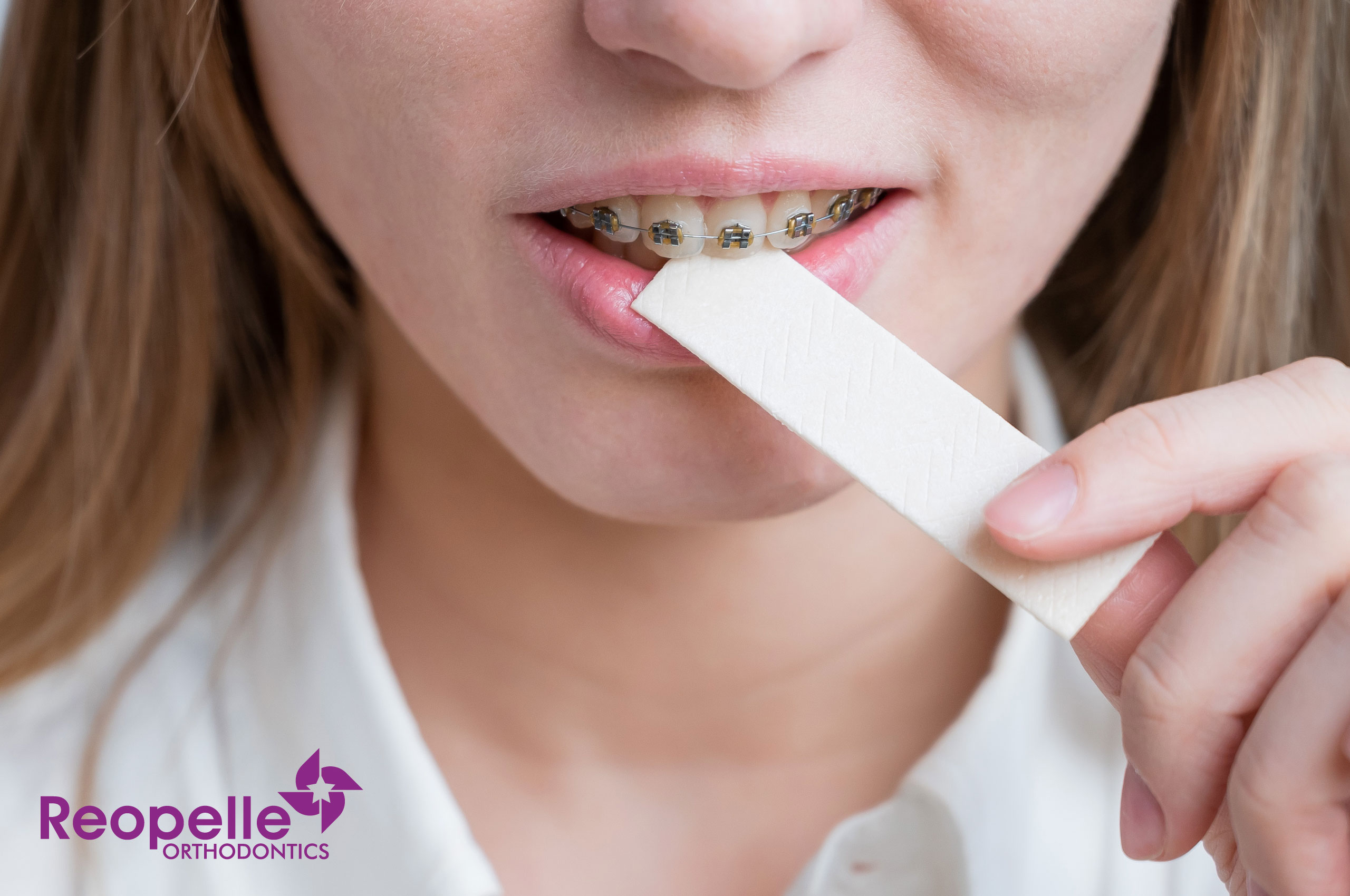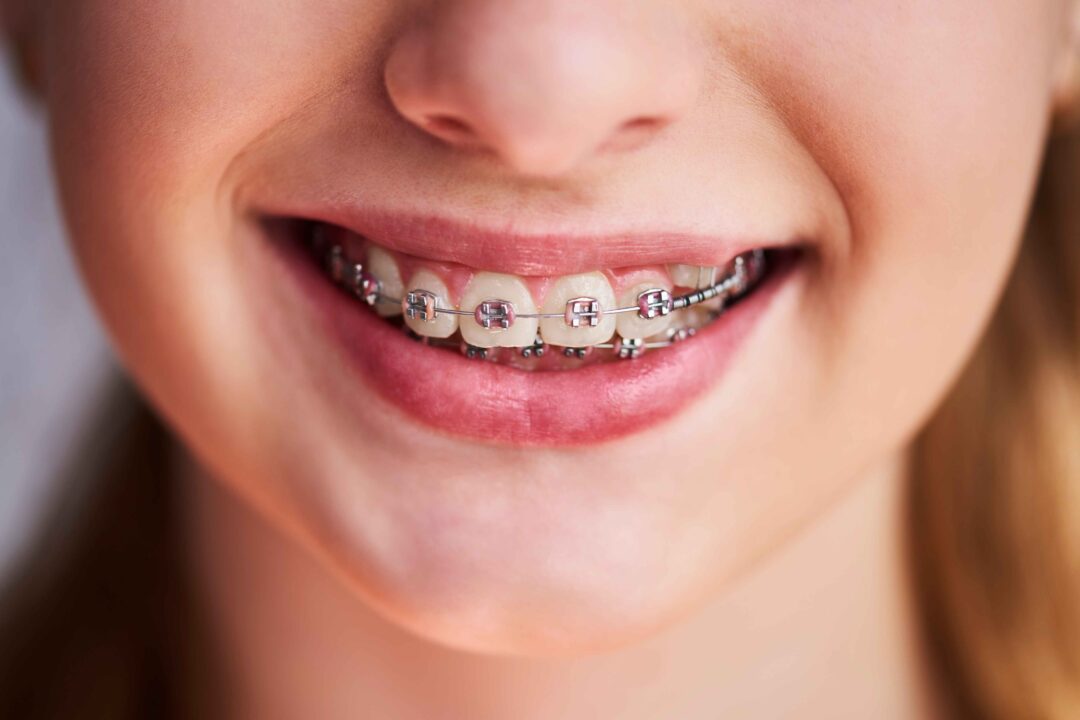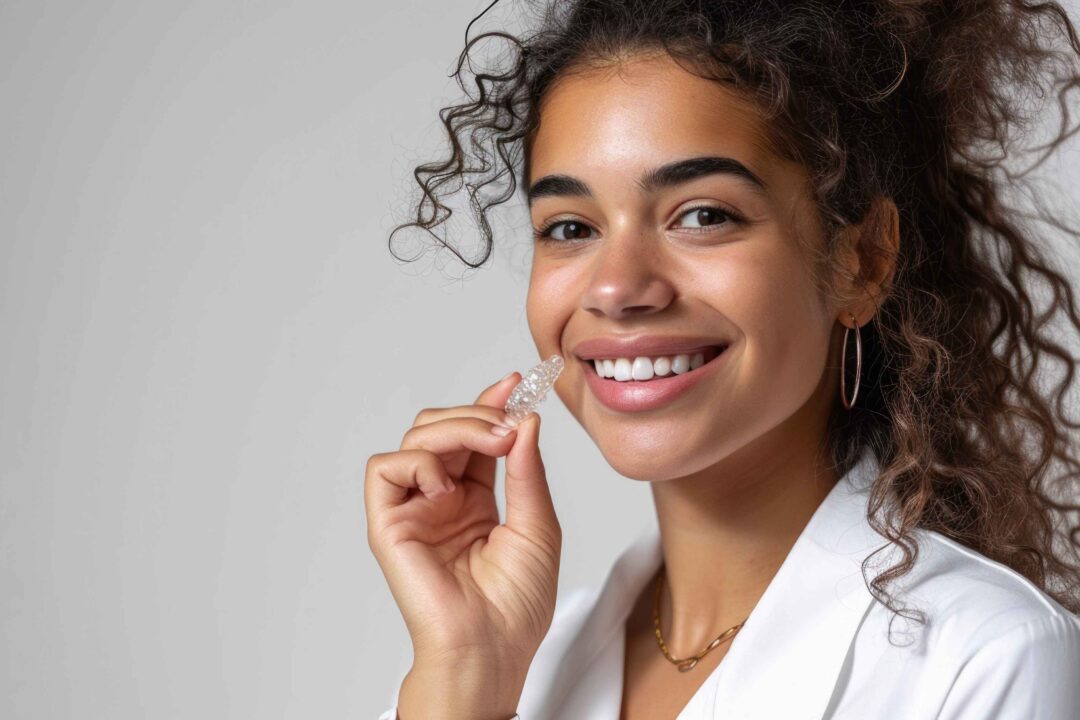Does Chewing Gum Complicate My Orthodontic Treatment With Braces?

Can You Eat Gum With Braces?
Using orthodontic appliances might be complicated, especially concerning new habits you must adapt to and the need to take proper care of the devices. But, hence, they are fully optimal and functional.
One of the most complex aspects of getting accustomed to orthodontics is dealing with the new eating habits orthodontic users must inevitably adapt. Newbies must get used to eating easy-to-chew foods, eating fewer sweets, and eliminating hard meats from their diet, which are some of the most challenging things to do.
Eating food in smaller pieces is one of the basic rules, and it applies to eating meat (i.e., thick tomahawk), raw vegetables (i.e., carrots), or whole fruits (i.e., apples). It makes sense to eat these foods in bite-size pieces, not to force the molars and exert less pressure on chewing, and avoid the need to tear an apple with the front teeth.
Can I Chew Gum With Braces?
An important fact is to avoid acidic foods as much as possible, such as citrus fruits, pineapple, tomato, vinegar, etc. These foods contribute to the erosion of tooth enamel.
It is normal to have canker sores (aphthous ulcers) that are very common in people who use orthodontics. We recommend our patients avoid irritating foods (spiced food like chile) and liquids (like alcohol) that can cause discomfort and pain.
Can You Chew Gum With Braces
We recommend avoiding chewing gum consumption during orthodontic treatment in Roanoke. Chewing gum might be one of the most problematic foods for braces users.
Sugar-added chewing gum increases dangerous bacteria growth, the risk of tooth decay, gum disease, and eventual tooth loss, negatively affecting your oral health.
But, you may ask yourself, Why should I stop eating gum if I like it so much? Chewing gum causes orthodontic wires to deteriorate faster.
For instance, If you want to break a metal wire in half without wire cutters, you would only have to bend and unbend the rod several times at the same point, and it will end up yielding. When you chew gum, it has the same effect on the wires of your orthodontic braces.
Also, rubber bands can move or break, making it easier for the wire to detach from the bracket. In the worst case, this will prolong orthodontic treatment for a whim.
What Kind of Gum Is Good for Teeth?
We know we didn’t recommend chewing gum during orthodontic treatment. However, if you decide to do so, the best option is sugar-free gum. The American Dental Association (ADA) published studies in this regard.
These clinical studies show that chewing sugar-free gum for twenty minutes after meals increases saliva production helping prevent tooth decay by 28%.
Also, chewing gum sweetened with xylitol helps stop the leading cause of cavity growth, the fearsome streptococcus mutant bacteria.
Can You Chew Gum With Invisalign?
There is a recurring question we have from patients. Can I chew gum using Invisalign? Unfortunately, even if your orthodontist tries your shoes to the best possible, the answer is a bold “no,” or at least no if you want to chew gum while wearing your appliances.
The problem with chewing gum with Invisalign is that it can stick to the retainers, deform them, and cause them to hit your teeth. Even if they don’t get misshapen, you could cause your retainers to hit each other with your teeth nulling the intended plan of the retainer. For this reason, eating gum on Invisalign is not a good idea.
What if Gum Sticks to My Brackets?
Try removing it quickly if you get unlucky and the gum gets stuck in the brackets or wires. Use your toothbrush to clear away as much gum as possible, carefully brushing to avoid damaging your appliances.
In addition to brushing, use regular dental floss to get it out of the entrenched areas and crevices; flossing should gradually loosen the stickiness. If this doesn’t help, use plain water or mouthwash to humidify the chewing gum, making it less sticky and easier to get rid of.
Can You Have Gum With Braces?
However, if none of these possibilities seem to work, try an interdental flosser and repeat the process as often as needed. Gum also softens when you eat. After a meal, check if you have any remains of gum and clear it by practicing your oral hygiene routine. Keep in mind you might also need professional cleaning to avoid putting your gums at risk.
What To Do in Case of an Orthodontic Emergency?
If a wire breaks, you can use a clipper or a small wire cutter to shorten the wire length and avoid cheeks skin damage. In case the wires derail, use a pencil eraser and try to insert the wire back into its intended position.
Call or set an emergency appointment in any of those cases, including a loose bracket. At Reopelle Orthodontics, we strive to provide our patients with warm and personal care for their orthodontic needs for a beautiful smile.



